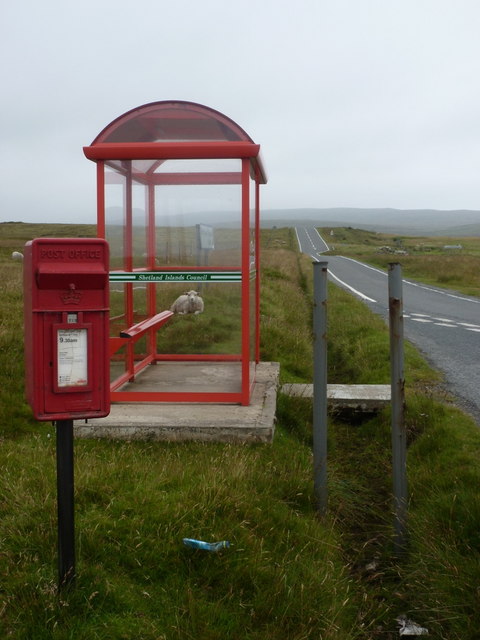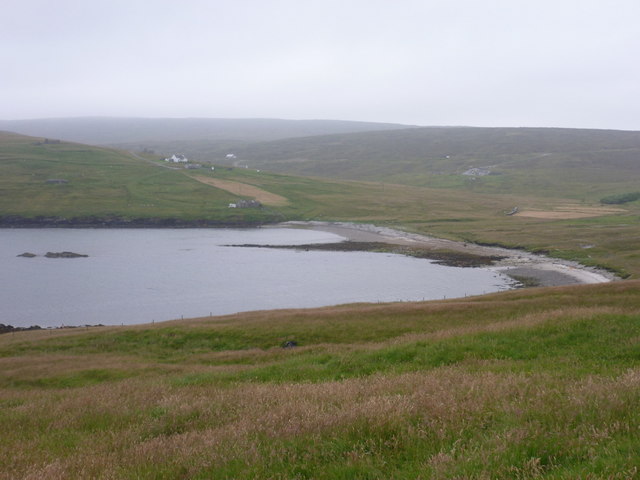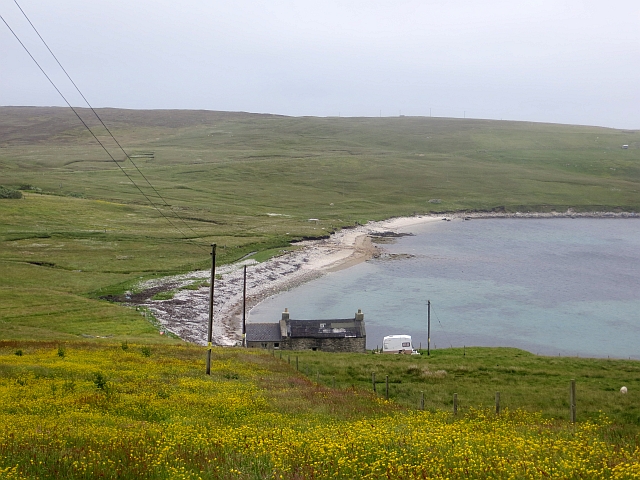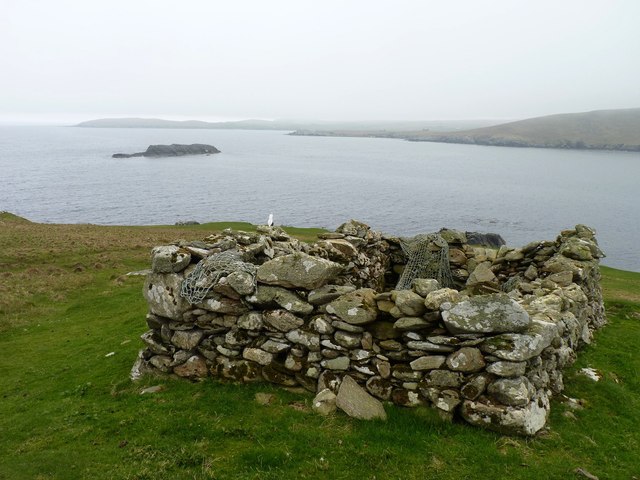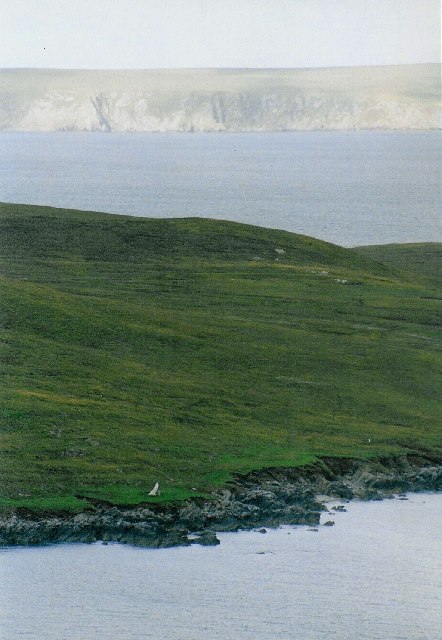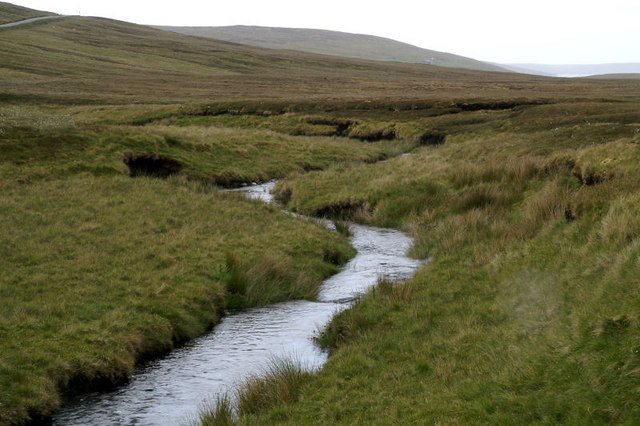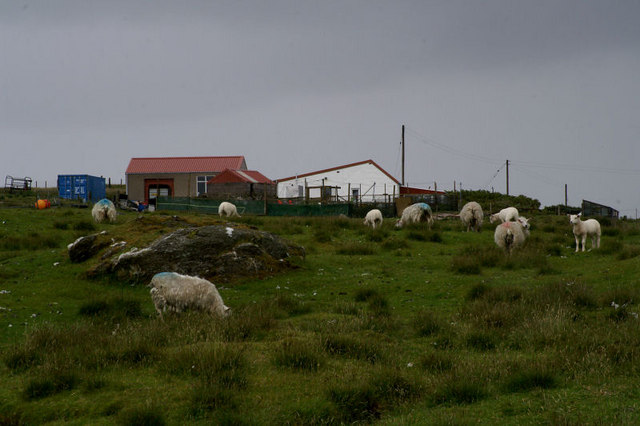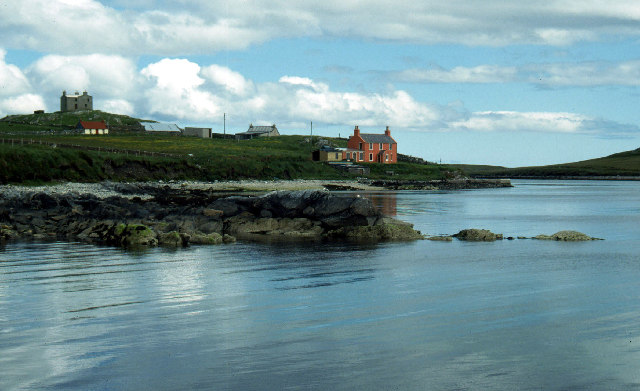The Helliack
Coastal Feature, Headland, Point in Shetland
Scotland
The Helliack
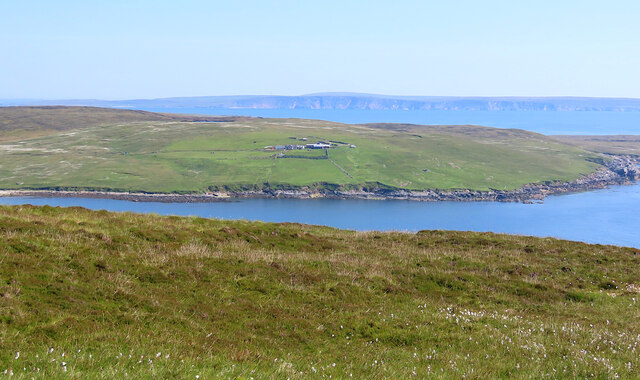
The Helliack is a prominent coastal feature located in the Shetland Islands, off the northeastern coast of Scotland. It is a headland or point that juts out into the North Sea, forming a distinctive landmark along the rugged coastline of Shetland. The Helliack is known for its dramatic cliffs, which tower above the crashing waves below.
Rising to an elevation of approximately 50 meters (164 feet), the Helliack offers breathtaking panoramic views of the surrounding area. The headland is composed of layered rocks, showcasing the geological history of the region. The cliffs themselves are a result of the continuous erosion by the sea over millions of years, creating stunning formations and natural arches that add to the area's allure.
The Helliack is also a popular spot for birdwatching enthusiasts, as the cliffs provide nesting sites for a variety of seabirds, including puffins, guillemots, and razorbills. Visitors can often witness these colorful birds soaring above the waves or perched on the rocky ledges.
Access to the Helliack is relatively easy, with a well-maintained footpath leading to the headland from nearby coastal villages. The area is frequented by hikers, photographers, and nature lovers seeking to experience the raw beauty of Shetland's coastline.
Overall, the Helliack is an exceptional coastal feature that showcases the ruggedness and natural splendor of the Shetland Islands. It offers visitors a chance to immerse themselves in the stunning landscapes, observe diverse wildlife, and appreciate the power of nature's forces at work.
If you have any feedback on the listing, please let us know in the comments section below.
The Helliack Images
Images are sourced within 2km of 60.557199/-1.0191427 or Grid Reference HU5386. Thanks to Geograph Open Source API. All images are credited.
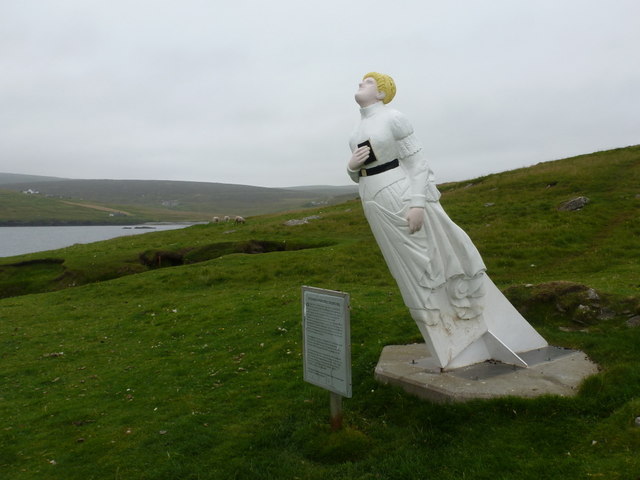
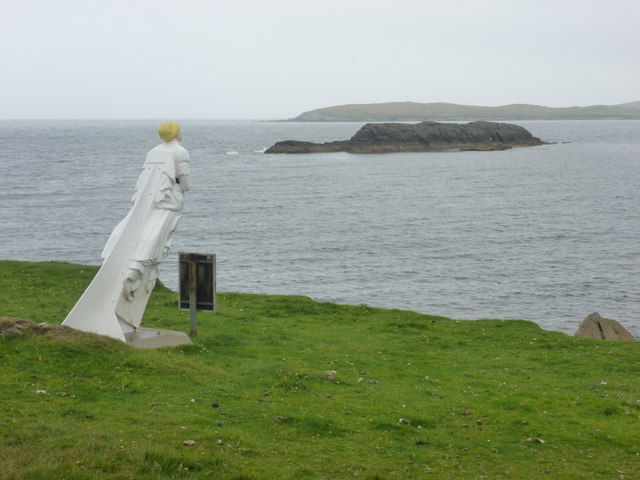
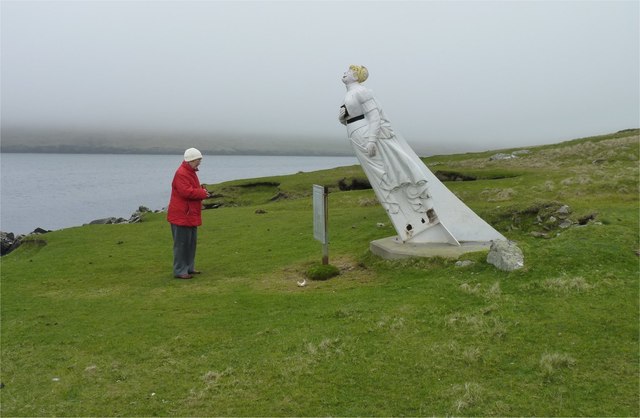
![Figurehead of the "White Wife" According to local tradition (and thus published many times) The White Wife (or White Lady) of Otterswick is said to be a German lady.
According to her life records we have to say that Bertha is a British girl or more correctly a Scottish girl, &quot;born in Grangemouth of German parents&quot;.
She was the figurehead of the steel barque Bertha built in 1892 by Grangemouth Dockyard Co., Grangemouth, as yard no. 163. Her dimensions were: 74,11×11,70×6,88 metres [248&#039;2&quot;×38&#039;4&quot;×22&#039;4&quot;] and with a tonnage of 1653 GRT (1499 NRT and 2600 DWT). She was launched at the shipyard of Grangemouth Dockyard Co. for Joh. H. Soost, Hamburg on July 6th, 1892 and assigned the official German signal RJQD.
She was named after Bertha, the eldest daughter of Joh. H. Soost, and this should be the proper name of The White Lady.
In 1899 she was sold to Captain M. Dietrich, Hamburg, and thereafter changed hands several times. In her great days until 1912 she did a lot of long distance runs such as 1904 from Lizard Point to Seattle in 154 days, 1906 from Lizard Point to Sydney in 117 days and again in 1909 in 114 days or in 1910 from Sydney to Falmouth f/o in 129 days.
In 1912 she was sold to Sweden changed hands several times and ended up with Förnyade Ångfartygs AB Viking, Gothenburg, for SEK 500.000. She was then renamed Bohus and assigned the official Swedish Reg. No. 5903 and signal KBCV. Captain at that time was Mr Ragnar Erik Nyberg, Stockholm. Bertha was bound to the Baltic Sea, mostly sailing in Swedish and Finnish waters.](https://s0.geograph.org.uk/photos/60/69/606956_9287ed4c.jpg)
The Helliack is located at Grid Ref: HU5386 (Lat: 60.557199, Lng: -1.0191427)
Unitary Authority: Shetland Islands
Police Authority: Highlands and Islands
What 3 Words
///lists.rant.lawyer. Near Ulsta, Shetland Islands
Nearby Locations
Related Wikis
Aywick
Aywick is a small settlement on the east side of Yell, an island forming part of the Shetland Islands north of Scotland.The naturalist Bobby Tulloch was...
Otterswick
Otterswick is a hamlet on the island of Yell in the Shetland Islands, on the inlet of Otters Wick. It is on the east side of the island. There is also...
Gossabrough
Gossabrough is a coastal hamlet, wick and ness on the southeast side of the island of Yell, Shetland, Scotland. The Wick of Gossabrough lies between the...
Mid Yell
Mid Yell is a coastal settlement on the island of Yell, the second largest of Shetland Islands, Scotland. Mid Yell, the largest settlement on the island...
Burra Voe
Burra Voe (Old Norse: Borgavagr, Broch Bay) is sheltered bay (voe) at the southeast corner of the island of Yell. The village of Burravoe (HU525795) is...
Burravoe
Burravoe is a community on the north shore of Burra Voe, in the south-east part of the island of Yell in the Shetland Islands, Scotland. The name Burravoe...
Hascosay
Hascosay (Scots: Hascosay; Old Norse "Hafskotsey") is a small island lying between Yell and Fetlar in the Shetland Islands, Scotland. == Geography and... ==
Old Haa Museum
The Old Haa of Brough in located in Burravoe, Yell, Shetland, Scotland. Built for Robert Tyrie, a merchant, in 1672, houses the local museum for Burravoe...
Nearby Amenities
Located within 500m of 60.557199,-1.0191427Have you been to The Helliack?
Leave your review of The Helliack below (or comments, questions and feedback).
